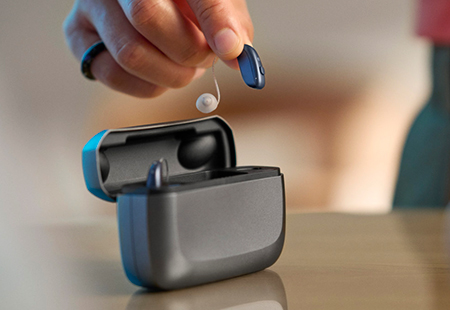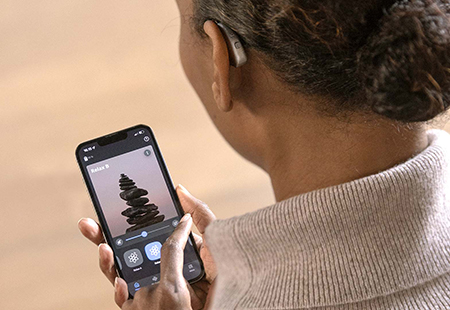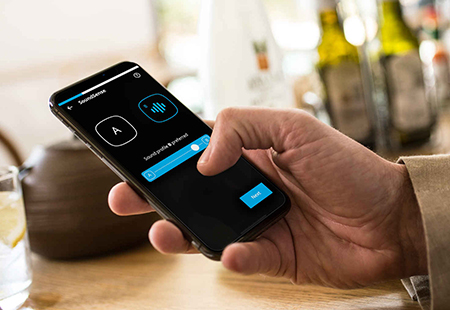Features to enhance your hearing
Each one of us is different, and no two ears are the same. We recommend hearing aids that will work best for you, based on your unique hearing loss, lifestyle and listening needs.

Each one of us is different, and no two ears are the same. We recommend hearing aids that will work best for you, based on your unique hearing loss, lifestyle and listening needs.

Struggling in noisy environments is common with hearing loss.
More here >Modern hearing aids detect voices and reduce background noise, helping you focus on conversations, enjoy social situations, and hear more clearly in busy environments.

Hearing words but not understanding them? High-pitch sounds may be affected.
More here >High-pitch consonants like "s", "sh" and "th" are often the first to be missed. Hearing aids amplify only the sounds you struggle with, making speech clearer without making everything louder, so you can follow along more easily.

No more fiddling with batteries.
More here >Rechargeable hearing aids are convenient, easy to manage and environmentally friendly. Simply charge them overnight, and you’ll have a full day of hearing without the hassle of changing batteries.

Stream calls, music and videos straight to your ears.
More here >Bluetooth-compatible hearing aids connect with smartphones, tablets and computers, making it easy to take calls, listen to music or watch videos, so you can stay connected wherever you go.

Tinnitus often accompanies hearing loss, and hearing aids can help manage it.
More here >Many hearing aids offer tinnitus management programs, using soothing sounds to distract from ringing or buzzing. Options range from calming ocean waves to white noise, and your audiologist can customise the settings to suit you.

Hearing aids can adapt to your preferences automatically or manually.
More here >After your audiologist sets up your hearing aids for your hearing loss, you can adjust them using your smartphone or device controls. Over time, they learn your favourite settings, adapting automatically so you can enjoy clear, comfortable hearing in every environment.